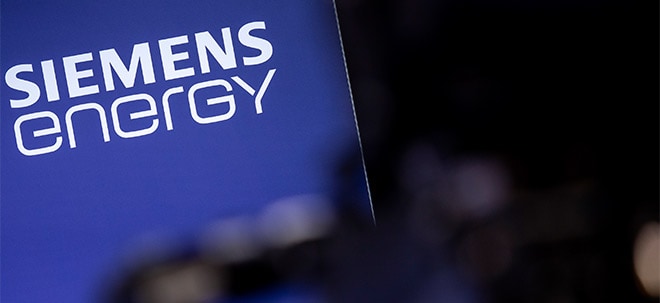Plastic Based Meat Packaging Market to Reach $14.4 Billion, Globally, by 2034 at 3.9% CAGR: Allied Market Research
The rapid expansion of e-commerce platforms and organized retail chains has significantly influenced the meat packaging industry. With consumers increasingly turning to online channels for grocery shopping, the demand for high-quality, tamper-proof, and visually appealing meat packaging has grown substantially. These platforms require packaging that ensures the freshness and safety of meat products during transportation and delivery, particularly as orders are fulfilled from centralized warehouses and delivered over long distances.
WILMINGTON, Del., May 8, 2025 /PRNewswire/ -- Allied Market Research published a report, titled, "Plastic Based Meat Packaging Market by Product Type (Trays, Clamshells, Bags & Pouches, and Others), Material Type (Polyethylene (PE), PET, Recycled PET (rPET), Polypropylene (PP), and Others), and Meat Type (Chicken, Beef, Pork, and Others): Global Opportunity Analysis and Industry Forecast, 2025-2034". According to the report, the "Plastic Based Meat Packaging Market" was valued at $9.9 billion in 2024, and is estimated to reach $14.4 billion by 2034, growing at a CAGR of 3.9% from 2025 to 2034.

Rising Global Demand for Meat Products
The global appetite for meat has been steadily increasing, fueled by rapid population growth, rise in income, and urbanization in emerging economies across Asia, Africa, and Latin America. As urban lifestyles evolve, dietary patterns are shifting toward higher protein intake, with meat becoming a staple in many households. This rising demand is placing pressure on the meat supply chain and simultaneously driving innovation and investment in the meat packaging sector to support growing volumes and maintain quality standards. According to the OECD-FAO Agricultural Outlook 2023–2032, global per capita meat consumption is projected to rise by 2% between the 2020–2022 base period and 2032. This growth is primarily attributed to middle-income countries, where economic expansion, urbanization, and the proliferation of fast-food industries are influencing dietary habits. Poultry meat is expected to account for 41% of the protein consumed from all meat sources by 2032, followed by pig, bovine, and ovine meat. Per capita meat consumption in India has also shown an upward trajectory. Between 2015 and 2023, urban areas witnessed a 42% increase in per capita meat consumption, rising from 3.1 kg to 4.4 kg annually. This surge is influenced by factors such as urbanization, changing food habits, and the expansion of quick-service restaurants (QSRs). The QSR sector in India grew by 18% annually between 2020 and 2023, reaching USD 2.7 billion, with a 35% increase in meat-based menu items.
Download Sample Pages of Research Overview: https://www.alliedmarketresearch.com/request-sample/A43994
Trump's Tarriff Impact on Meat Packaging Industry
The imposition of tariffs has led to retaliatory measures from key trading partners. China, for instance, imposed a 25% retaliatory tariff on U.S. pork, in addition to the existing 8% most-favored-nation rate, placing U.S. pork producers at a competitive disadvantage compared to other suppliers. Consequently, U.S. pork exports to China declined from $2.28 billion in 2020 to $1.24 billion in 2023. Similarly, beef and poultry exports faced challenges due to expiring certifications and retaliatory tariffs, threatening approximately $5 billion in trade with China. Tariffs on imported steel and aluminum, essential materials for meat packaging, led to higher input costs. The U.S. International Trade Commission reported that Section 232 tariffs increased aluminum prices by 1.6% and steel prices by 1.5%, which, in turn, raised costs for downstream industries, including meat packaging. These increased costs pressured companies to either absorb the expenses or pass them on to consumers. The tariffs sparked political debates, especially in agricultural states. Some Republican lawmakers expressed concerns over the long-term viability of such trade policies, fearing sustained economic harm to their constituencies. The Meat Institute also opposed Section 301 tariffs, advocating for comprehensive trade agreements to mitigate the adverse effects on the meat industry.
Sustainable & Eco-Friendly Packaging Solutions for Meat Products
The meat packaging industry is undergoing a significant transformation toward sustainability, driven by environmental concerns, regulatory mandates, and evolving consumer preferences. This shift emphasizes the adoption of eco-friendly materials and innovative packaging solutions to reduce the environmental impact of meat packaging. Researchers from the Indian Institute of Technology (IIT) Roorkee developed Kodo millet-based edible cups as an innovative solution to reduce plastic waste. This sustainable packaging approach utilizes Paspalum scrobiculatum (Kodo millet), guar gum, and hibiscus powder to enhance structural integrity and environmental sustainability. Such developments demonstrate how underutilized crops can be harnessed to develop biodegradable, edible alternatives to conventional plastic packaging. The Bureau of Indian Standards (BIS) issues the Ecomark certification to products that meet specific environmental criteria. This certification aims to increase consumer awareness and encourage the production of environmentally friendly products. The scheme has been updated under the 'LiFE' (Lifestyle for Environment) Mission, with the Central Pollution Control Board (CPCB) nominated as the implementer alongside BIS.
Report Coverage & Details:
Report Coverage | Details |
Forecast Period | 2025–2034 |
Base Year | 2024 |
Market Size in 2024 | $9.9 billion |
Market Size in 2034 | $14.4 billion |
CAGR | 3.9 % |
No. of Pages in Report | 437 |
Segments Covered | Product Type, Material Type, Meat Type, and Region |
Drivers |
|
Opportunity |
|
Restraint |
|
Cold Chain Dependency in Meat Packaging
The efficiency and effectiveness of meat packaging are heavily reliant on a well-developed cold chain infrastructure. Advanced packaging formats such as vacuum skin packaging, modified atmosphere packaging (MAP), and temperature-sensitive films are designed to preserve meat products under specific temperature conditions. These technologies are essential for maintaining the freshness, safety, and shelf life of perishable meat items, particularly in the context of long-distance transportation and e-commerce deliveries. ProAmpac and C-P Flexible Packaging have introduced innovative solutions in the Modified Atmosphere Packaging (MAP) sector to enhance both product visibility and freshness. ProAmpac introduced fiber-based MAP solutions such as the RAP Sandwich Wedge, which not only improves product visibility but also extends the freshness of packaged goods. C-P Flexible Packaging collaborated with Northwest Frozen to develop hermetically sealed meals using low-oxygen MAP techniques, further optimizing the shelf life and quality of frozen meals. In January 2022, FSSAI issued directions under Section 16(5) of the Food Safety and Standards Act, 2006, operationalizing the Draft Food Safety and Standards (Packaging) Amendment Regulations, 2022. These regulations pertain to the use of recycled plastics in packaging.
Request For Customization: https://www.alliedmarketresearch.com/request-for-customization/A43994
Growth in Organic Meat Demand in Asia-Pacific countries
The growth in organic meat demand in Asia-Pacific countries has become a significant trend driven by increasing health-consciousness and rising disposable incomes in the region. Organic meat, which is produced without the use of synthetic pesticides, fertilizers, or hormones, is gaining popularity among consumers who are more aware of food safety, environmental sustainability, and animal welfare concerns. In China and India, rapid urbanization and a burgeoning middle class are driving greater demand for high-quality food products, including organic meat. Consumers are becoming more discerning about the quality of the food they consume, influenced by concerns about the safety of conventionally produced meat, which may contain harmful chemicals or antibiotics. The Asia-Pacific region is projected to see a 1.3% annual growth in meat consumption from 2024 to 2035, reaching 114 million tons by 2035. This growth is primarily driven by increased demand in middle-income countries, particularly India and Southeast Asia, due to urbanization and rising incomes
Threat of New Entrants in the Meat Packaging Industry:
The threat of new entrants in the meat packaging industry is moderate to low due to several barriers to entry that protect established players. One of the key barriers is the significant capital investment required to set up meat processing and packaging facilities. These facilities need to meet stringent regulations related to food safety, quality control, and health standards, which can be costly for new companies to comply with. In addition, established companies benefit from economies of scale, allowing them to reduce unit costs and maintain competitive pricing that newcomers might find difficult to match.
Competitive Rivalry in the Meat Packaging Industry:
Competitive rivalry in the meat packaging industry is generally high due to the presence of several large, well-established players. Companies in this sector often compete based on factors such as price, product quality, innovation, and service. With many competitors offering similar products, there is intense pressure to maintain competitive pricing while ensuring compliance with health and safety regulations, which increases operational costs. Furthermore, the rise of consumer preferences for organic, sustainable, and ethically sourced meats adds another layer of competition, as companies need to differentiate themselves with these attributes.
Leading Market Players: -
- Amcor plc, Mondi
- Berry Global Inc.
- Sealed Air Corporation
- Winpak Ltd
- Coveris
- Bolloré Group
- Sealpac International bv
- Smurfit Kappa
- ULMA GROUP
Recent Key Developments
- In August 2023, Amcor launched AmFiber Packpyrus, a paper-based packaging solution for meat products. This packaging contains at least 85% paper fibers from FSC certified sources and offers a 56% reduction in carbon footprint compared to traditional plastic trays.
- In August 2023, Amcor acquired Phoenix Flexibles, a flexible packaging company based in Gujarat, India, to expand its market presence. In November 2024, Amcor agreed to acquire Berry Global for $8.43 billion in stock, aiming to enhance its product portfolio and global footprint.
The report provides a detailed analysis of these key players in the global Plastic Based Meat Packaging Market. These players have adopted different strategies such as new product launches, collaborations, expansion, joint ventures, and agreements to increase their market share and maintain dominant shares in different regions. The report is valuable in highlighting business performance, operating segments, product portfolio, and strategic moves of market players to highlight the competitive scenario.
Want to Access the Statistical Data and Graphs, Key Players' Strategies: https://www.alliedmarketresearch.com/meat-packaging-market/purchase-options
𝐒𝐢𝐦𝐢𝐥𝐚𝐫 𝐑𝐞𝐩𝐨𝐫𝐭𝐬
- Corrugated Packaging Market: Global Opportunity Analysis and Industry Forecast, 2021-2031
- Packaging Resins Market: Global Opportunity Analysis and Industry Forecast, 2023-2032
- Battery Packaging Market: Global Opportunity Analysis and Industry Forecast, 2021-2031
- Plastic Compounding Market: Global Opportunity Analysis and Industry Forecast, 2023-2032
- Polyethylene Terephthalate (PET) Market: Global Opportunity Analysis and Industry Forecast, 2023-2032
- Plastic Recycling Market: Global Opportunity Analysis and Industry Forecast, 2022-2031
- Pyrolysis Oil Market: Global Opportunity Analysis and Industry Forecast, 2021-2031
- U.S Packaging and Protective Packaging Market: U.S. Opportunity Analysis and Industry Forecast, 2023-2032
- Flexible Packaging Market: Global Opportunity Analysis and Industry Forecast, 2023-2032
- Packaging Products Market: Global Opportunity Analysis and Industry Forecast, 2023-2032
- Biodegradable Plastics Market: Global Opportunity Analysis and Industry Forecast, 2023-2033
About Us
Allied Market Research provides global enterprises as well as medium and small businesses with unmatched quality of "Market Research Reports" and "Business Intelligence Solutions." AMR has a targeted view to provide business insights and consulting to assist its clients to make strategic business decisions and achieve sustainable growth in their respective market domain.
Pawan Kumar, the CEO of Allied Market Research, is leading the organization toward providing high-quality data and insights. We are in professional corporate relations with various companies and this helps us in digging out market data that helps us generate accurate research data tables and confirms utmost accuracy in our market forecasting. Each and every data presented in the reports published by us is extracted through primary interviews with top officials from leading companies of domain concerned. Our secondary data procurement methodology includes deep online and offline research and discussion with knowledgeable professionals and analysts in the industry.
Contact:
David Correa
United States
1209 Orange Street,
Corporation Trust Center,
Wilmington, New Castle,
Delaware 19801 USA.
Int'l: +1-503-894-6022
Toll Free: +1-800-792-5285
Fax: +1-800-792-5285
help@alliedmarketresearch.com
Web: www.alliedmarketresearch.com
Allied Market Research Blog: https://blog.alliedmarketresearch.com
Blog: https://www.newsguards.com/
Follow Us on | Facebook | LinkedIn | YouTube |
Logo: https://mma.prnewswire.com/media/636519/Allied_Market_Research_Logo.jpg
![]() View original content:https://www.prnewswire.com/news-releases/plastic-based-meat-packaging-market-to-reach-14-4-billion-globally-by-2034-at-3-9-cagr-allied-market-research-302449868.html
View original content:https://www.prnewswire.com/news-releases/plastic-based-meat-packaging-market-to-reach-14-4-billion-globally-by-2034-at-3-9-cagr-allied-market-research-302449868.html
SOURCE Allied Market Research

